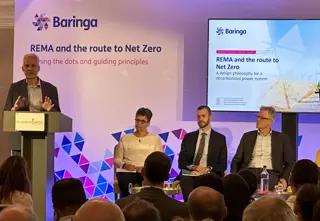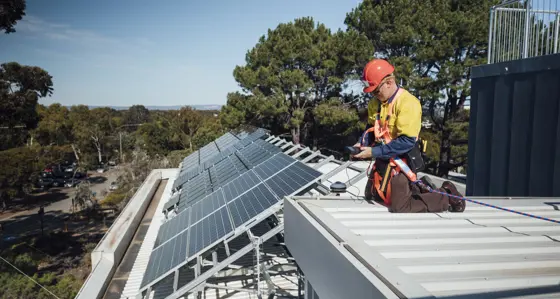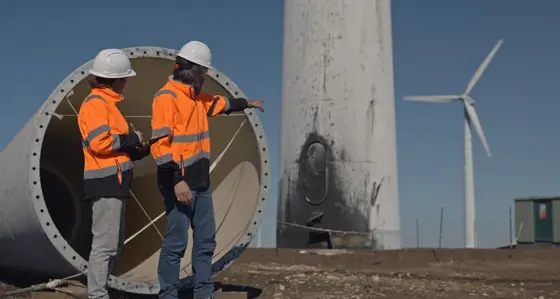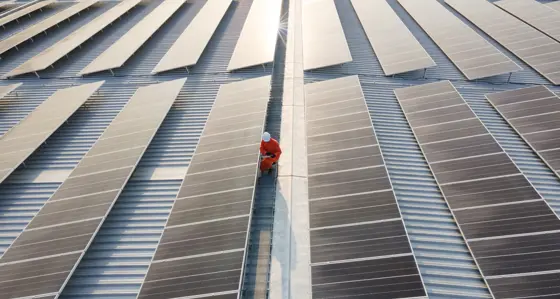
REMA and the route to net zero: a design philosophy for a decarbonised power system
24 October 2023
On 27 September 2023, as part of our ongoing series of events on the UK’s path to net zero, we were joined by speakers across the energy industry to discuss REMA, its implications, and the challenges and opportunities policymakers and the industry face.
Launched in tandem with the British Energy Security Strategy in 2022, REMA (Review of Electricity Market Arrangements) aims to make the electricity market more efficient and cost-effective, while also supporting the UK's transition to a net zero carbon economy by 2050. It represents one of the most transformative changes to the wholesale energy market in the last decade.
While earlier market reforms have helped to deliver significant reductions in carbon emissions, REMA’s scope, ambition and targets bring huge challenges covering decarbonisation, new technology and infrastructure deployment, and energy affordability. With an ongoing UK and global energy crisis driven by the war in Ukraine, accompanying price shocks, supply chain challenges and recently announced wider policy changes, REMA sits at the heart of an immensely complex and dynamic system. Our panel, including experts on energy investment, consumer advocacy and retail market reform, and energy system design and policy, came together to share their ideas on how to make the most of REMA.

Putting REMA in context – the scale of the challenge
Noting Rishi Sunak’s recent announcement on green policies, the UK government remains committed to decarbonising its electricity system by 2035 and reaching net zero by 2050. While great strides have been made in decarbonising the power system over the last decade, there is no doubt that the scale of the challenge ahead still is enormous. To set the scene, our first Baringa speaker detailed the implications of the UK’s 2035 targets:
-
A doubling of peak time electricity demand.
-
Three to four times more renewable and low-carbon electricity generation capacity than today.
-
Halving of our reliance on gas capacity.
We then dug into the areas where REMA needs to interact and work in tandem with broader energy market policy to deliver net zero. Within REMA, these included pricing mechanisms in the wholesale market, the need to invest in renewables and low carbon flexibility, and the need to build a system that is both technically operable and delivers adequate capacity to ensure the lights do not go out. Beyond this we argued that REMA cannot deliver on its promise without reform that drives rapid expansion of the electricity network, brings forward new generation technologies sitting outside REMA such as gas with carbon capture and storage (CCS) and hydrogen to power, and wider supply chain and retail market reform to drive demand-side flexibility.
The need for legally binding timelines
Our final speaker brought a legal perspective, reiterating the importance of clear and legally binding timeframes to send the right signals to investors. REMA is currently in danger of falling between two stools – it could offer an evolution of earlier reforms or a revolution in the vein of market liberalisation. Investors are looking for clarity – around 80% of participants in the REMA consultation said that current market arrangements are not fit for purpose. With estimates for investment needed to deliver a fully decarbonised electricity system ranging from £200-400 billion, supplying certainty in the form of a legally binding roadmap can help unlock the enormous amounts of capital needed.
Overarching design philosophy to achieve policy alignment and deliver the pace of change net zero needs
With the complexity of the context in which REMA operates laid bare, our second Baringa speaker argued that instead of treating individual policy areas in isolation, it would be better to consider two options for an overarching, top-down design philosophy to inform policy design choices and priorities across three broad electricity challenges:
-
System-level design: Coordinating new generation, demand and storage assets needed on the system to inform the network infrastructure that we need.
-
Infrastructure delivery: Delivering huge amounts of new infrastructure and technology across both supply and demand sides.
-
Operational signals: Giving clear, real-time operational signals to assets on the system to inform when and where electricity is produced and stored.
Across each of these areas, we can decide how much to centralise or decentralise the system, how much to rely on market forces versus long-term Government contracts to deliver infrastructure, and the extent of more dynamic operational signals. For example, to what extent should our system-level design be centralised within the role of the ESO (Electricity System Operator) or FSO (Future System Operator)? How much of our infrastructure delivery should be based on long-term government-backed contracts? And how much market exposure should exist within those contracts? Explicit choices on these guiding principles can help broad policy alignment.
Where are we now?
We argued that the need to deliver vast amounts of infrastructure in anticipation of future demand, including a transmission and distribution network, means that a centralised approach to system-level design is likely to be the best approach. We already see evidence of a trend towards a more centralised approach, with the ESO taking on roles including HND (Holistic Network Design). We see this trend continuing as the FSO takes on the centralised strategic network plan in 2024. Infrastructure delivery has become increasingly contracted through Government-led CfDs (Contracts for Difference), and more recently through bespoke business models developed by DESNZ (Department for Energy Security and Net Zero) to deliver assets including CCS and hydrogen to power.
Our speaker then ran through two models to deliver net zero.
Option 1 – Build and manage
In the first model, there is more centralised system-level design along with increasing the number of long-term contracts through Government-backed initiatives to deliver infrastructure. This would include greater usage of CfDs and making bespoke, technology-specific business models the norm rather than the exception. With limited market exposure and long investment timeframes, we argue that this model would not need to rely on sharp operational signals.
Option 2 – Sending the right signals
Under the second model, centralising system-level design would remain a focus, but market exposure would be maximised within CfDs that exist, adoption of revenue cap and floor-type arrangements which de-risk but not subsidise investment and funding technologies through rapid market-based competition. With higher market exposure, this model would make sharper operational signals more sensible. These signals could include locational pricing, reform to distribution and charging arrangements and fundamental retail market reform.
Both models offer a way to send clear and consistent vision to a massive range of parties across a complex web of policy. In both models, we see the need for an expanded role for a central design authority to prioritise system design initiatives and to manage interactions across the complexity of the electricity system, and coordinated programme delivery. But both models involve trade-offs. While the second model might lead to a more efficient decarbonisation pathway, implementing it requires time and significant industry effort. The first model on the other hand might be more likely to deliver system change quickly.
Exploring an investor’s view
Next, we heard the perspective of an investor in the electricity market. Delivering the energy transition requires huge investment. Our panellist asked our audience to consider what might be the most productive way to balance the risks involved in these investments.
Moving away from viewing electricity as a commodity
Specifically, our panellist challenged the traditional view that electricity should always be treated as a commodity. While the market may have done so in the past, is it time to review this notion and reassess how and where risk is allocated when developing an electricity system fit for the future?
Investment in electricity systems in the past involved a different balance of capital and operational costs to today’s investments. Today, the bulk of investment is in capital costs as operational costs for renewable electricity generation tend to be lower than for more carbon-intensive forms of generation of the past.
Allocating risk – finding the right balance
With these higher upfront costs front of mind, is it fair or sensible to expect investors in renewable capacity generation to absorb market-based risks over which they have little control? Two of the biggest drivers of future energy scenarios are societal and political – how people use energy, and how policy is decided. Without control over these risks, investors, who are already managing significant upfront technical, developmental, and operational risks, are likely to look for higher premiums in order to invest for a return.
Considering this, can arguments be made to put in place enduring mechanisms to manage these risks? Or should market risks be passed back to those parties with the greatest power to predict future system-level policy – governments, institutions and, ultimately, the consumers they represent?
REMA and its impact on the retail consumer
For a view from the retail market, our next panellist pointed to the need for REMA to play a role in solving the most pressing challenges that consumers face. The energy crisis and later price shock revealed a UK energy system that has failed to shield customers from market turbulence. Consumer bodies have experienced alarming increases in enquiries for help from vulnerable customers affected by the energy crisis.
For our panellist, REMA offers an opportunity to address affordability and to explain the transitions consumers will be expected to make. These transitions could include both behaviour changes, with the expectation that consumers become more flexible, along with potentially disruptive changes to home heating equipment in the drive towards decarbonisation.
REMA cannot exist in a vacuum
Picking up on a theme touched on by the Baringa team, our panellist stressed the need to consider how REMA impacts the entire policy landscape, including retail market design and policy. Changes to wholesale pricing and distribution policies will invariably affect consumers, so how can these impacts be given due consideration? In addition, what information is needed to drive consumer behaviour change in relation to flexibility and alternative home heating technologies?
Our panellist went on to suggest that consumer advice organisations are looking for further analysis on the interaction between various policy reform initiatives, and improved coordination across institutions, for example between DSNEZ and Ofgem.
Finally, in what would become a consistent refrain during the event, our panellist called for clear timelines on decisions and policy certainty, arguing that increased uncertainty can reduce the investment in technology and infrastructure by both businesses and consumers that is so crucial to the net zero transition.

Tackling the challenges of energy supply security, availability and deliverability
REMA might offer an opportunity to consider strategically how we can achieve supply security, availability, and deliverability. But it might involve a reassessment of how we define energy availability, choosing between always having energy on demand, or having enough energy available when we need it. The question of deliverability inevitably then leads to a discussion of the need for REMA to help drive investment in low carbon generation and storage, but also crucially, in networks.
Close partnerships with Europe on grid investment remain crucial
With the UK’s biggest opportunities for increasing renewable energy capacity lying offshore in the North Sea, cooperating closely with Europe is vital. A meshed North Sea grid, for example, could be capable of delivering a target figure of 360-400GW. Currently, the UK is connected to continental Europe and Ireland by several interconnectors with 8GW of capacity. With Ofgem’s Third Cap and Floor regime application process open, the ambition is to expand this to 18GW by 2030-32. This is great news for renewable energy availability, but policy alignment in terms of deliverability needs to be agreed with the EU in tandem.
Questions from the floor
Opening the discussion to our event attendees brought questions on the need for a ‘convening mind’ incorporating stakeholders from across the energy market to facilitate policy discussion across a complex myriad of different bodies. While some saw the introduction of the FSO as a step in the right direction, others pointed to examples from abroad, including the Danish Energy Agency and echoed the need for reform to the current regulatory regime beyond REMA.
Moving on we discussed Green Power Pool (GPP) reform proposals to delink the price of electricity generated by renewables from that generated by gas-fired power plants. Our panellists recognised the opportunity that the GPP offers to deliver lower-priced electricity to vulnerable retail customers but suggested that existing mechanisms including CfDs might be able to achieve comparable results with less disruption. One panellist also highlighted concerns that GPP reforms might come with the risk of more variable electricity prices which might adversely affect consumers.
Another attendee expressed concern that time is running out for the energy industry to deploy the amount of capital needed to reach net zero in time. With a UK general election looming and little time left in this parliament to create the necessary legislative design to fast-track REMA, the industry needs to look for small wins and maintain momentum on large projects as far as possible.
The last questions of the day focused on the role of interconnectors and the impact of recent net zero policy change announcements. Covering the changing role of interconnectors, our panel saw possibilities for increased usage of multi-purpose interconnectors in future, especially considering the prospects of a North Sea mesh grid for offshore wind. The UK’s decision to rejoin the North Seas Energy Cooperation agreement in December 2022 is a positive step towards energy cooperation between the UK and Europe. Expanding the use of multi-purpose interconnectors is likely to require just this type of cooperation.
Our investor panellist used recent net zero policy change announcements to highlight the issue of political risks that lie beyond investors’ control. Finally, our panel reiterated both the need for policy certainty to send consistent signals to the market and the importance of maintaining the momentum of the energy transition amongst both consumer and business stakeholders.
Thank you to our speakers for sharing their expertise and to all attendees for contributing to a fascinating discussion.
To learn more about the work Baringa is doing in market design please contact Lewis Heather, Vikash Ahuja and Duncan Sinclair. To hear about future Baringa Net Zero events, look out for updates in Energy Insights, our Energy and Natural Resources newsletter.
Related Client Stories

Unlocking scalable growth in the private energy sector
A leading private energy company faced a critical challenge: its legacy systems were slowing down operations, limiting scalability, and creating friction across commercial and operational teams.
Read more
Progressing Western Australia’s energy transition
With growing urgency around net-zero targets, how can practical solutions be identified to unlock faster and more effective project delivery in the Wholesale Electricity Market?
Read more
Navigating transition risk and opportunities with Equitix
Join Energy and Resources Director Jim Fitzgerald, as he talks to our client Charlotte Whittlesea from the Sustainability and ESG team at Equitix about a recent project to integrate climate risk and opportunity considerations into Equitix’s investment lifecycle.
Read more
Securing financing to accelerate Southeast Asia’s clean energy future
How can solar project investors have a view on future revenues in a region with diverse markets?
Read moreIs digital and AI delivering what your business needs?
Digital and AI can solve your toughest challenges and elevate your business performance. But success isn’t always straightforward. Where can you unlock opportunity? And what does it take to set the foundation for lasting success?

